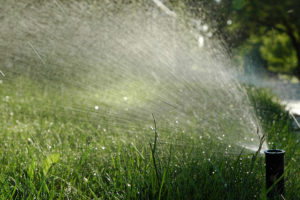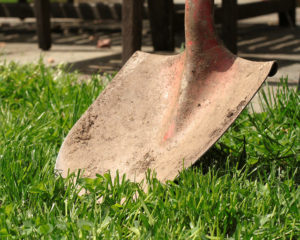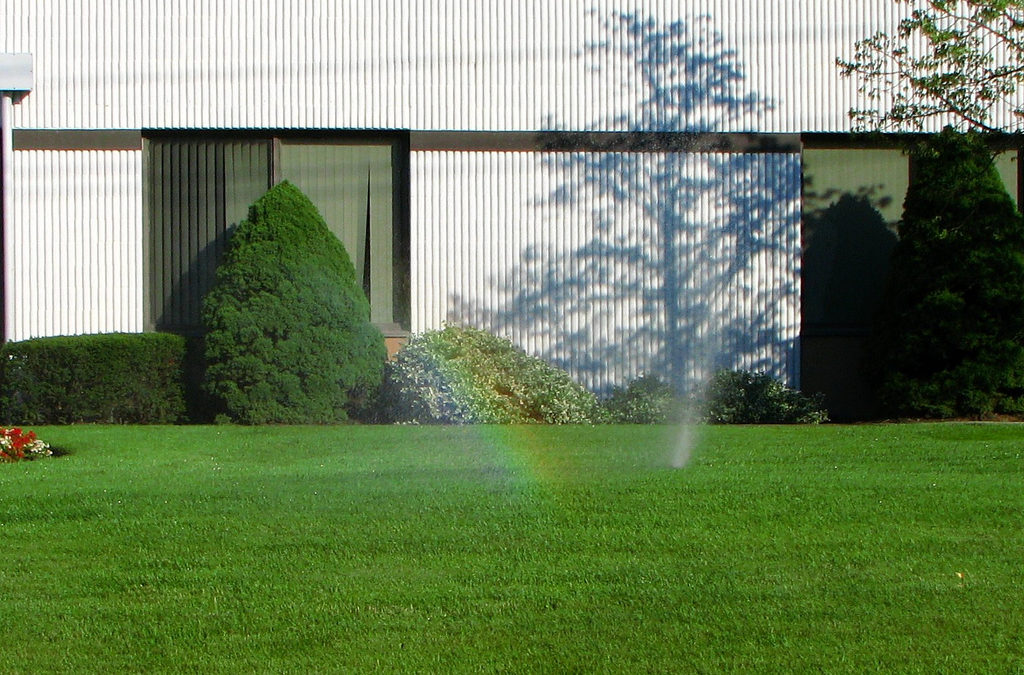Watering the lawn is easy, right? Stand out there with a hose, maybe put out a sprinkler when it’s looking a little parched – nothing to it! Right?
Well, that depends – how do you want your lawn to look? If you care about the health of your grass, there’s actually a lot more to it! If you want to turn a patchy, yellow lawn into a green, thick, healthy piece of land you can be proud of, it’s important to follow some simple but very important guidelines. These include knowing how much water you should be using, and when you should be using it.
When is Watering Ideal
Lawn watering can’t just be done whenever the mood strikes; choosing the wrong time can severely harm your grass. Water in the morning, when the sun isn’t too high, the wind is low, and the air is cooler, to avoid excessive evaporation. Don’t water in the evening or overnight, because the water will sit on the grass and be ripe for fungus and other lawn diseases.

More water isn’t always better; in fact, overwatering can be very detrimental to the health of your grass. Lawns are more resilient than the plants in your garden, and as such they don’t have to be watered more than twice a week or every three days. Watering too often can make the roots shallow, as they won’t have to grow as deep to get their nourishment, and this can weaken the turf. Watering twice a week encourages grass to root in deeper.
New grass brings its own set of unique circumstances. In order to get seeds to grow, the watering has to be correct – not enough water can kill the germination, but too much can wash the seeds away and not let them take root in one spot. You’ll also, as we’ve seen, get shallow roots. It’s crucial to keep the ground moist and not let it dry out, but not to overwater. If you want a healthy lawn and ensure a uniform growth, keep an eye on the areas and make sure they don’t go too far in either direction.
How to Water Effectively
 When it comes to watering an older lawn, it’s best to do it thoroughly. Soak six inches into the soil, the depth to which a healthy root system grows. If it’s the first time you’re watering, use a shovel to see how long and how deep the water is getting, checking every 15 minutes. This way, you’ll know exactly how long it will take for your lawn to be sufficiently watered for the future, and you won’t drown the grass.
When it comes to watering an older lawn, it’s best to do it thoroughly. Soak six inches into the soil, the depth to which a healthy root system grows. If it’s the first time you’re watering, use a shovel to see how long and how deep the water is getting, checking every 15 minutes. This way, you’ll know exactly how long it will take for your lawn to be sufficiently watered for the future, and you won’t drown the grass.
Once you’ve figured out the optimal timing, it might be good set up a timer and get a built-in system. Early morning waterings can often be forgotten in a busy work week, and like we’ve said, doing it after work is a bad idea. A timer can ensure your grass gets what it needs, when it needs it, and lets you commit to your lawn’s health even with a job.


Recent Comments